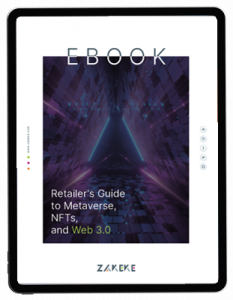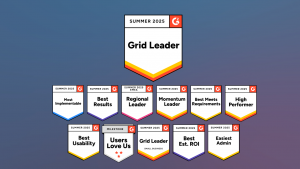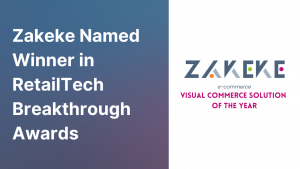The metaverse, a complex digital landscape, presents a new context for brands. Its potential implications for shopping are intriguing yet uncertain. In this article, we will explore the metaverse, its relation to shopping, notable experiences, examples, and its possible impact on the future of retail.
Understanding the Metaverse
The metaverse, a term that’s been making rounds, is a convergence of various technologies: Augmented Reality (AR), virtual reality (VR), blockchain, the Internet of Things (IoT), and the Internet, all functioning in real time. It’s not a singular entity but a network of interconnected digital spaces, each with unique characteristics and rules.
The metaverse is challenging due to its evolving nature. In the first five months of 2022, over $120 billion was invested in metaverse-related technologies, more than double the $57 billion invested throughout 2021 (McKinsey). Even though the pandemic-induced “metaverse hype” has subsided, the trend toward digitalization continues.
Apple’s venture into this space with its augmented and virtual reality goggles demonstrates the increasing sophistication of mixed-reality devices. The investment influx is not limited to large tech companies but also includes venture capitalists, private equity firms, startups, and established brands.
The current state of the metaverse is a blend of various initiatives that blur the lines between physical and digital realities. Gaming platforms like Roblox are driving the early versions of the metaverse, but its potential reaches far beyond gaming.
According to a McKinsey report, the metaverse is poised to impact various sectors, such as Consumer and Retail, Media and Telecommunications, Healthcare, Financial Services, Automotive, Tourism, and Entertainment.
This article will delve deeper into the potential of retail and shopping in the metaverse.
What is the vision for Metaverse Shopping?
In the metaverse, shopping becomes an immersive journey where consumers in the future can interact with products and brands like never before.
Traditional shopping and metaverse shopping are distinct experiences. First of all, in the digital realm we can’t rely on smell, taste and touch, just on sight and sound. Yet, the metaverse opens up possibilities that traditional commerce couldn’t match. Let us dive deeper into what the metaverse could bring to the table:
- Physically impossible experiences: Metaverse shopping could offer a more immersive experience than traditional shopping. In the metaverse, customers of the future can try on clothes online through a 3D fitting room and even get a 360-degree view of what outfits look like. They could even buy a new car while taking an adrenaline-pumping test drive, get a beauty consultation from a personal advisor, and try on accessories, sunglasses, and makeup to check how the item looks and feels.
- Personalization and data tracking: Metaverse shopping, as it is for e-commerce platforms, could leverage AI technology to track and collect a customer’s activity, purchase history, taste, and demographic profile and use this data to provide new and more personalized clothes recommendations and encourage purchases. With all the harvested data, the metaverse platform could provide valuable insights for R&D, marketing, or third parties.
- Integration of virtual and physical reality: The metaverse is anticipated to eliminate the barrier between real physical shopping and online purchasing for the retail sector. It would allow customers to experience physical shopping in the comfort of their homes. Brands could thus sell virtual and physical goods on the same platform, transforming the face of online retail and opening up many new business opportunities.
However, success in the metaverse is more than just about creating flashy, high-tech experiences. It’s about understanding and catering to consumers’ needs and interests.
According to a McKinsey survey on commerce in the metaverse, consumers are now more willing to pay for product offerings that tie back to the physical world in some way than for purely virtual ones.
For instance, consumers ranked virtual events and virtual homes in the bottom two use cases in the fashion and beauty category. Consumers were most excited about experiences augmenting and complementing their physical-world experiences.
Most popular Metaverse Shopping experiences
While the full realization of the metaverse may still be on the horizon, brands are already pioneering new types of experiences and gathering crucial insights. Most of these activations are marketing initiatives designed to engage customers in innovative ways. This section delves into three of the most popular metaverse shopping experiences.
- Immersive Experiences: Immersive experiences in the metaverse offer a unique advantage for retail. For example, brands can create virtual stores and experiences in Spatial, where customers can explore products in 3D environments. Incorporating avatars in these virtual worlds enhances immersion and customer engagement. The ability to customize avatars’ appearances contributes to a more personalized interaction with the brand’s products. This level of immersion allows for a deeper connection with the product and the brand.
- Gamification: Using gamification in the metaverse is another strategy brands employ. By incorporating game-like elements into the shopping experience, such as completing quests to earn discounts or exclusive items, brands can make shopping more fun and engaging. This enhances the customer’s shopping experience and fosters brand retention, loyalty, and engagement.
- Phygital Experiences: Phygital experiences blend the physical and digital worlds to create a unique shopping experience. This can involve creating physical stores that incorporate AR technology, for example.
Alternatively, it can involve creating experiences that draw elements from virtual worlds but relate to physical products, providing a unique and engaging shopping experience.
Metaverse Shopping examples and case studies case studies
Let’s now delve into the application of these concepts in the real world.
- Immersive Experiences: Obsess, a company that has pioneered the development of a virtual store platform, is a prime example. Collaborating with high-profile brands such as Fendi, Prada, Mattel, and Dyson, Obsess has created immersive 3D shopping experiences that transport customers into the brand’s universe. This platform enables brands to present their products in a unique, engaging manner.
- Gamification: Polo Ralph Lauren’s collaboration with Fortnite is a standout example. The US brand designed in-game clothing for Fortnite. This included two “Polo 1991” jumpsuits and physical merchandise, including sweaters and polo shirts. The brand also hosted a virtual Fortnite tournament and a Twitch live stream, marking this partnership as Ralph Lauren’s most significant metaverse venture. This activation was designed to engage younger consumers and provide a fun, engaging experience that reflects their style.
- Phygital Experiences: Nike’s augmented reality experience in their Seoul store and Benetton’s Playlife initiative are noteworthy examples. Nike’s experience allowed customers to interact with products in a new, engaging way, merging the physical and digital worlds to enhance the shopping experience. For example, with QR codes, people could create their own Nike products from scratch. Benetton’s initiative offered discounts after completing an experience in Benetton’s Roblox virtual store but could be used in physical stores, creating a unique, integrated shopping experience.
However, it’s crucial to remember that these activations must align with a company’s goals and needs. The metaverse offers many opportunities, but it’s not a one-size-fits-all solution.
Metaverse Shopping and the Future of Retail
The metaverse commerce playbook is still being written. The success of the metaverse in retail depends on creating a virtual world in which to engage, mixing different technologies. Consumers increasingly see their digital shopping experience becoming a rich ecosystem across multiple online channels, and the metaverse may be a natural expansion.
Despite the substantial promise of the metaverse, the emergence of a new channel means retail executives also have significant challenges and questions they will have to tackle. For example, they must consider how the metaverse could impact physical stores by further shifting consumers’ preferred shopping channels.
Retailers must seek the right balance between their physical retail network and virtual-world offerings, aiming to develop a seamless connection between them to drive real-world sales.

DVRS
DVRS is a pioneering Web3 studio, guiding brands on their blockchain journey. With a team of seasoned blockchain engineers and crypto-native experts, they create immersive experiences and build digital communities, setting new standards in the Web3 space.















